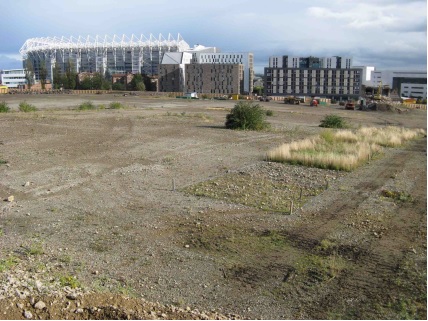News & Events
New Paper: Rapid removal of atmospheric CO2 by urban soils

The measured calcium carbonate content of soils to 100 mm depth at a large urban development site has increased over 18 months at a rate that corresponds to the sequestration of 85 tonnes CO2 per hectare (ha-1) (8.5 kg CO2 m-2) annually. This is a consequence of rapid weathering of calcium silicate and hydroxide minerals derived from demolition of concrete structures, which releases Ca that combines with CO2 ultimately derived from the atmosphere, precipitating as calcite. Stable isotope data confirm an atmospheric origin for carbonate-carbon, and 14C dating indicates the predominance of modern carbon in the pedogenic calcite. Trial pits show that carbonation extends to depths of 1 m or more. Work at other sites shows that the occurrence of pedogenic carbonates is widespread in artificially created urban soils containing Ca and Mg silicate minerals. Appropriate management of less than 12,000 hectares of urban land to maximise calcite precipitation has the potential to remove 1 million tonnes of CO2 from the atmosphere annually. The maximum global potential is estimated to be approximately 700-1,200 Mt CO2 per year (representing 2.0-3.7% of total emissions from fossil fuel combustion) based on current rates of production of industry-derived Ca and Mg-bearing materials.
http://pubs.acs.org/doi/abs/10.1021/es505476d
Last modified: Thu, 23 Apr 2015 11:27:08 BST





